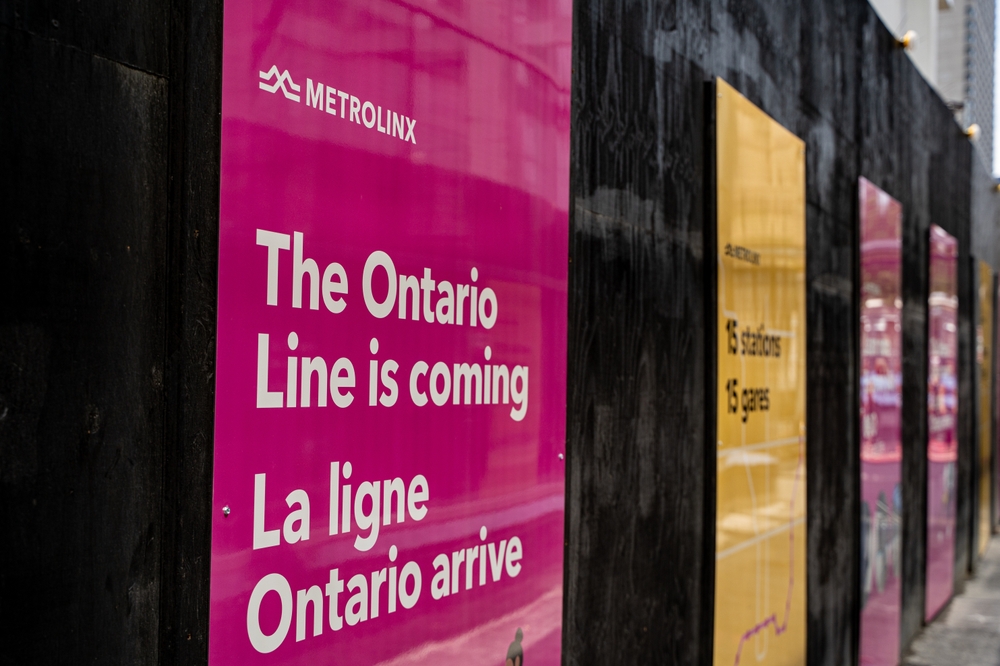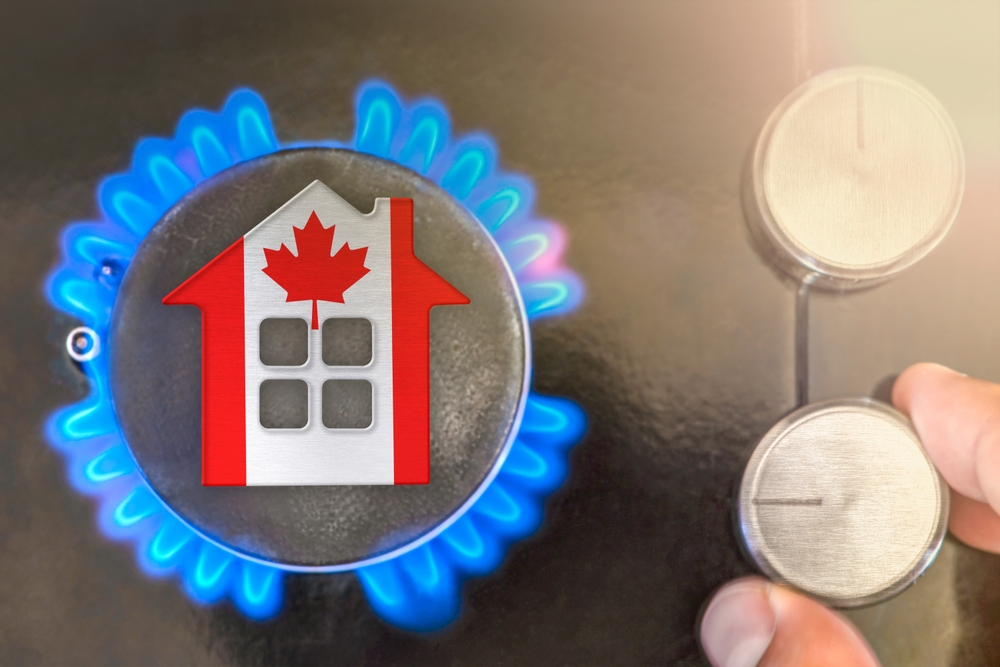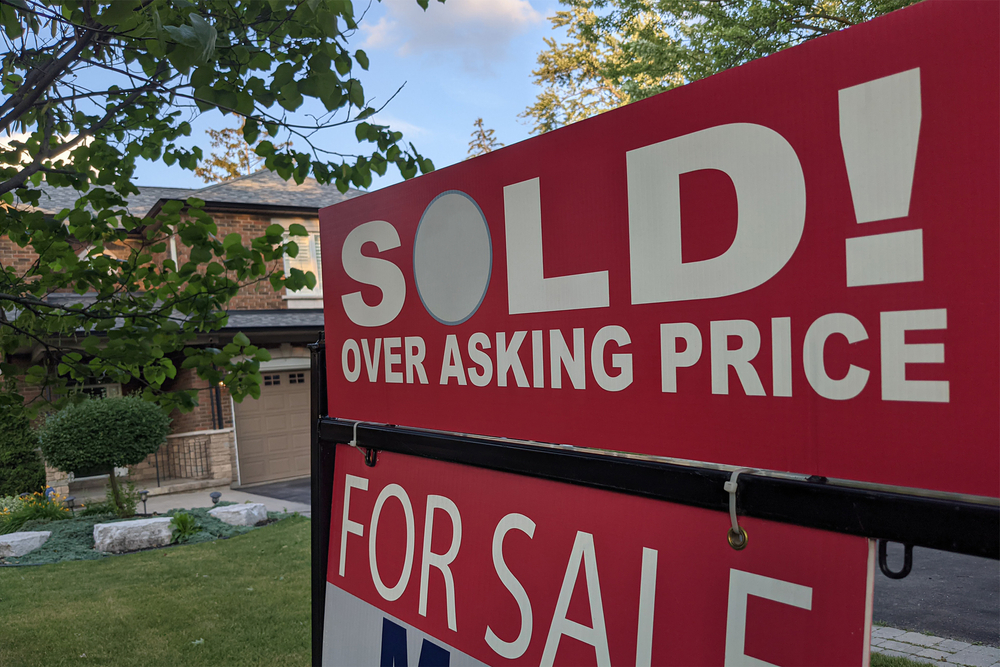Canada’s housing market is a maze even for experienced buyers, but first-timers face unique pitfalls that can derail budgets, delay timelines, or lead to costly surprises. From misreading inspection reports to underestimating long-term ownership costs, these traps are common, avoidable, and rarely discussed with full honesty. Here are 16 real estate traps first-time buyers keep stepping into.
Falling for “Staging Magic” and Ignoring Functional Layout Problems

Staging is designed to trigger emotion, and first-time buyers often confuse visual appeal with practical liveability. A small room looks larger with minimal furniture; awkward corners disappear with clever decor; and open shelving creates an illusion of space that’s impossible to maintain in real life. The trap occurs when buyers overlook storage limitations, poor natural light, cramped entrances, or inefficient kitchen layouts simply because the home feels beautiful during a walkthrough. Understanding functional flow, room proportions, and long-term usability matters far more than appreciating a well-styled coffee table
Underestimating Closing Costs

Many first-time buyers pour every dollar into the down payment without fully grasping the range of closing costs that follow. Land transfer taxes, legal fees, title insurance, appraisal costs, and adjustments for property taxes or utilities can add thousands to final totals. Cities like Toronto and Vancouver apply additional municipal land transfer taxes that catch buyers off guard. Then there are moving expenses, utility connections, and immediate repairs the seller didn’t cover. These costs arrive all at once, often under tight deadlines.
Assuming Pre-Approval Equals Final Approval

A pre-approval letter is encouraging but not a guarantee. Many first-time buyers misunderstand it as a binding commitment from the bank, only to learn that underwriters reassess everything (income stability, debt levels, employment history, credit activity) before issuing final approval. Even a small change, like a new credit card, a temporary job shift, or an unplanned large purchase, can reduce or void eligibility. Appraisal results can also affect financing: if the lender’s valuation comes in lower than the purchase price, buyers must cover the difference in cash. This trap leads to frantic last-minute loan scrambling and, in worst cases, failed deals with costly penalties.
Ignoring “Special Assessments” in Condo Purchases

Condo buyers often fixate on the unit itself and overlook the financial health of the building. A special assessment, an unexpected lump-sum fee charged to owners, can arise when major repairs exceed the reserve fund, such as roof replacements, structural fixes, garage repairs, or elevator overhauls. First-timers rarely read reserve-fund studies or status certificates closely enough to spot red flags. A building with aging infrastructure, low contributions, or deferred maintenance can saddle owners with thousands in surprise costs. The trap is discovering that the condo fee wasn’t covering as much as expected. Reviewing documents thoroughly or hiring a lawyer to explain them is essential to avoid slow-building financial burdens.
Believing a Home Inspection Is Optional in Competitive Markets

In hot markets, some buyers waive inspections to win bidding wars. While it may beat other offers, it exposes them to significant unknown risks: hidden mould, faulty wiring, foundation cracks, aging plumbing, or roof damage that isn’t visible during a quick showing. First-time buyers often underestimate how expensive these issues can be. A single major repair can cost more than the initial down payment. The trap stems from urgency — the pressure to secure a property quickly. Yet skipping an inspection often turns a “dream home” into a financial drain.
Misjudging Commute Times by Touring at the Wrong Hour

Buyers frequently evaluate homes at quiet times: midday, early afternoon, or weekend mornings. Roads feel calm, neighbourhoods sound peaceful, and travel seems manageable. But weekday traffic can transform a pleasant 20-minute drive into a congested 55-minute ordeal. First-timers often commit to new areas without testing commute patterns at peak hours. They also overlook school drop-off congestion, train schedules, transit crowding, or winter storm traffic. The trap appears months later, when routines settle and frustration grows.
Ignoring Red Flags Hidden in MLS Listings

Listings are marketing tools, and first-time buyers often miss the coded language agents use to soften negatives. Phrases like “cozy,” “awaiting your personal touch,” “up-and-coming neighbourhood,” “handyman special,” or “unique layout” frequently signal structural issues, outdated interiors, noise concerns, or awkward floor plans. Photos showing only corners of rooms, missing kitchen shots, or exterior-only pictures can indicate bigger problems. The trap lies in assuming the listing is neutral when it’s actually curated. First-time buyers benefit from reading between the lines, comparing multiple listings, and asking direct questions.
Forgetting That Property Taxes Increase Over Time

Many first-time buyers calculate affordability using current property-tax rates, not realizing how frequently municipal taxes rise — especially in growing or infrastructure-heavy cities. As assessments increase, taxes follow, often adding hundreds annually to ownership costs. New subdivisions may face additional levies for development charges. Buyers who stretch their budgets to the limit often feel the squeeze when these increases hit. This trap is unavoidable. Planning for rising taxes ensures the home remains sustainable financially, even as municipal budgets shift.
Underestimating Renovation Costs — Especially in Older Homes

First-time buyers often imagine renovations as simple weekend projects inspired by home-improvement shows. In reality, older Canadian homes hide layers of outdated wiring, aging plumbing, asbestos, knob-and-tube systems, uneven floors, and structural surprises that multiply costs quickly. A “small update” can balloon once walls are opened or contractors discover issues unseen during walkthroughs. Many buyers also underestimate labour costs, permit fees, and the price of materials — especially in high-demand markets. The trap becomes clear only after closing, when budgets stretch thin and timelines drag on.
Assuming New Builds Are Problem-Free

Brand-new homes feel safe because everything looks clean, modern, and untouched. But first-time buyers often forget that new builds come with their own issues: construction delays, incomplete landscaping, unresolved defects, and warranty disputes. Developers may postpone occupancy or deliver homes before minor and major deficiencies are fixed. Soundproofing may be inadequate, materials may not match model-home displays, and early settlement can cause cracking or shifting. Buyers also face hidden costs like window coverings, fencing, driveway paving, and appliance upgrades. The trap lies in assuming “new” equals “perfect.” In truth, new homes require patience, documentation, and follow-up for deficiencies through programs like Tarion.
Overvaluing “Future Development Potential” Without Research

Many first-time buyers are tempted by listings that promise future amenities: new transit lines, shopping centres, schools, green spaces, or planned rezoning. The trap comes from assuming timelines will unfold quickly — or at all. Government projects face delays, redesigns, or cancellations, and private developments may stall for years due to financing or environmental approvals. Buying based on speculative upside can leave new owners waiting indefinitely for promised improvements. Worse, some “future development” actually means future construction noise, congestion, and reduced green space. Understanding municipal plans, zoning stages, and historical timelines for local projects helps buyers distinguish realistic improvements from marketing optimism.
Forgetting to Budget for Seasonal and Climate-Related Costs

Canada’s climate adds hidden expenses that first-time buyers often overlook. Heating bills in winter, air-conditioning during heat waves, snow removal, gutter cleaning, roof maintenance, and sump-pump monitoring all cost more than expected. In regions with heavy snowfall, buyers may need snowblowers, insulated garage doors, upgraded windows, or stronger roofing systems. Homes in flood-prone areas require backwater valves or larger insurance premiums. The trap isn’t just the cost of equipment — it’s the ongoing nature of climate-driven upkeep. New buyers tend to underestimate these seasonal obligations until they face their first winter storm or summer heat dome. Understanding local climate patterns helps set realistic expectations for year-round home maintenance.
Relying Too Heavily on Online Estimates and “Zestimates”

Automated valuation tools are convenient but often inaccurate, especially in Canada’s diverse neighbourhoods where housing types vary widely. First-time buyers who rely on online estimates may overvalue or undervalue homes, misjudge competition, or misunderstand true market conditions. These tools can’t account for renovations, unique layouts, micro-location differences, or local bidding behaviour. The trap occurs when buyers form fixed expectations based on digital guesses, leading to frustration or a poor negotiation strategy. Real estate is hyper-local, and automated models can be off by tens of thousands — sometimes more.
Not Checking Noise Levels at Different Times of Day

A neighbourhood can feel peaceful during a quiet showing, only to transform dramatically at night or early morning. First-time buyers often forget to check noise patterns from nearby highways, train lines, schoolyards, construction zones, nightlife, or flight paths. In cities like Toronto, Montréal, or Vancouver, noise fluctuation can significantly impact liveability. The trap lies in assuming one viewing reveals the full picture. Visiting multiple times — rush hour, late evening, early morning, and weekends — provides a more accurate sense of the soundscape.
Misreading the Emotional Pressure of Bidding Wars

Competitive markets trigger urgency, adrenaline, and fear of missing out. First-time buyers often get swept into bidding wars, increasing their offer beyond budget or waiving conditions out of panic. Later, they experience financial regret or strain as monthly payments stretch beyond comfort. The trap is emotional rather than logistical: buyers anchor on winning instead of focusing on long-term affordability. Recognizing pressure tactics, setting firm ceilings, and walking away, when necessary, prevent impulsive overbidding. Markets fluctuate, but a mortgage lasts decades — and FOMO is a poor financial advisor.
Believing “Starter Homes” Are Temporary When They Aren’t

Many first-time buyers assume their first home will be a stepping stone — something they’ll outgrow and sell within a few years. But in Canada’s expensive markets, moving up is harder than expected. Transaction costs, land transfer taxes, and rising home prices can trap buyers in homes that no longer fit their needs. The trap lies in underestimating how long they’ll stay. Starter homes often become long-term residences by circumstance, not choice. Planning realistically for a 7–10-year horizon, rather than a quick flip, helps buyers choose homes that age well with their lifestyle.
21 Products Canadians Should Stockpile Before Tariffs Hit

If trade tensions escalate between Canada and the U.S., everyday essentials can suddenly disappear or skyrocket in price. Products like pantry basics and tech must-haves that depend on are deeply tied to cross-border supply chains and are likely to face various kinds of disruptions
21 Products Canadians Should Stockpile Before Tariffs Hit
